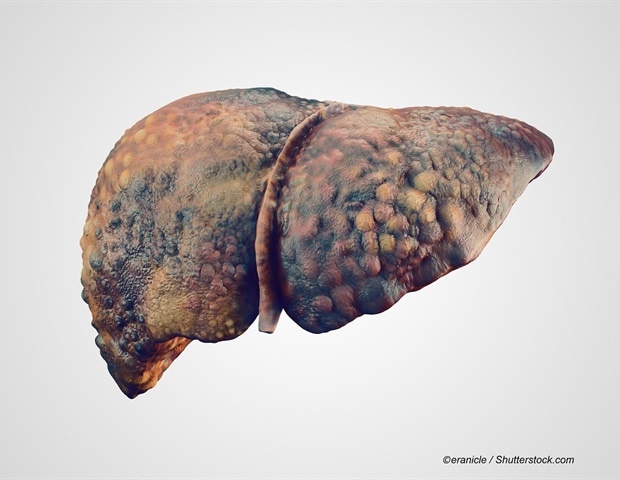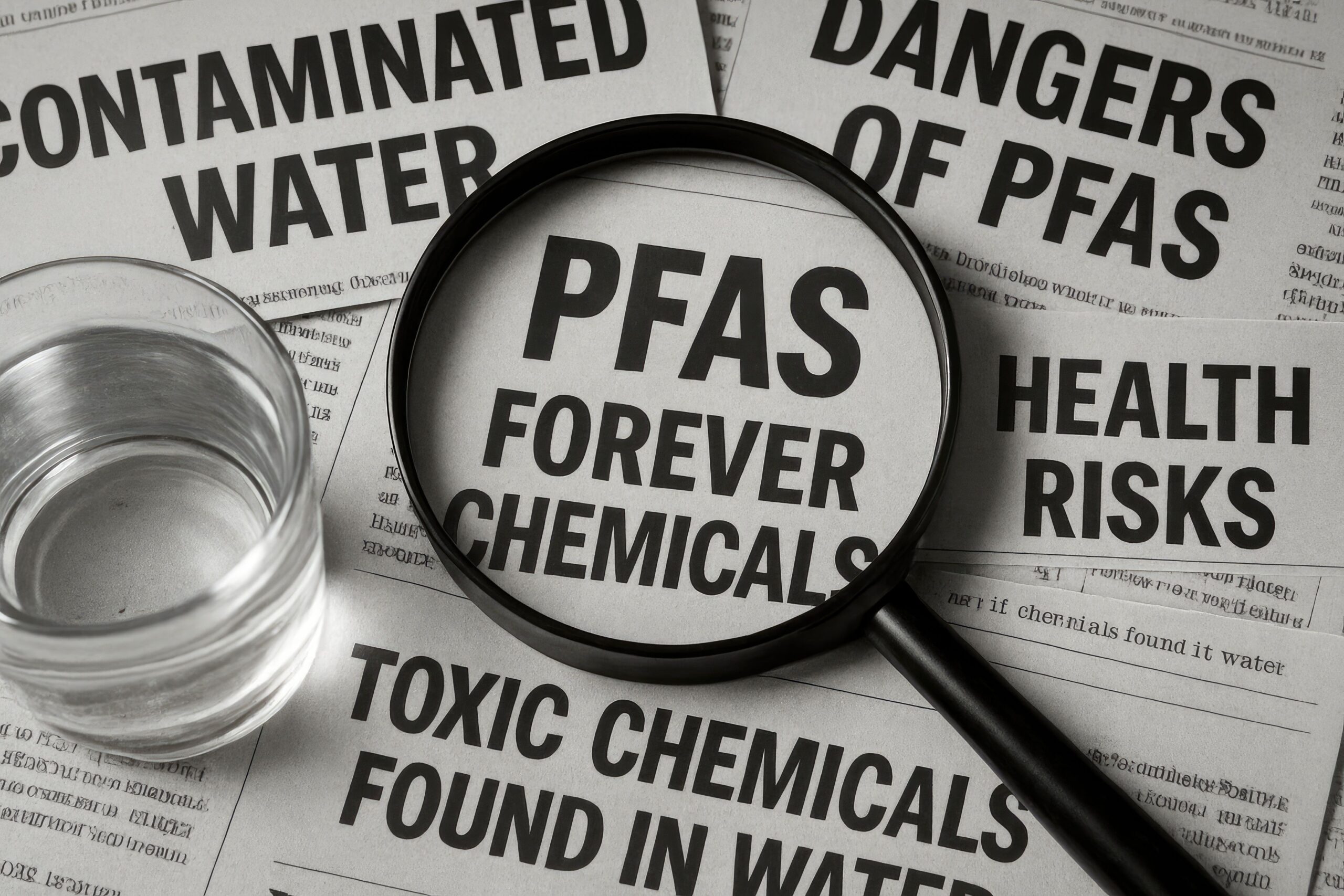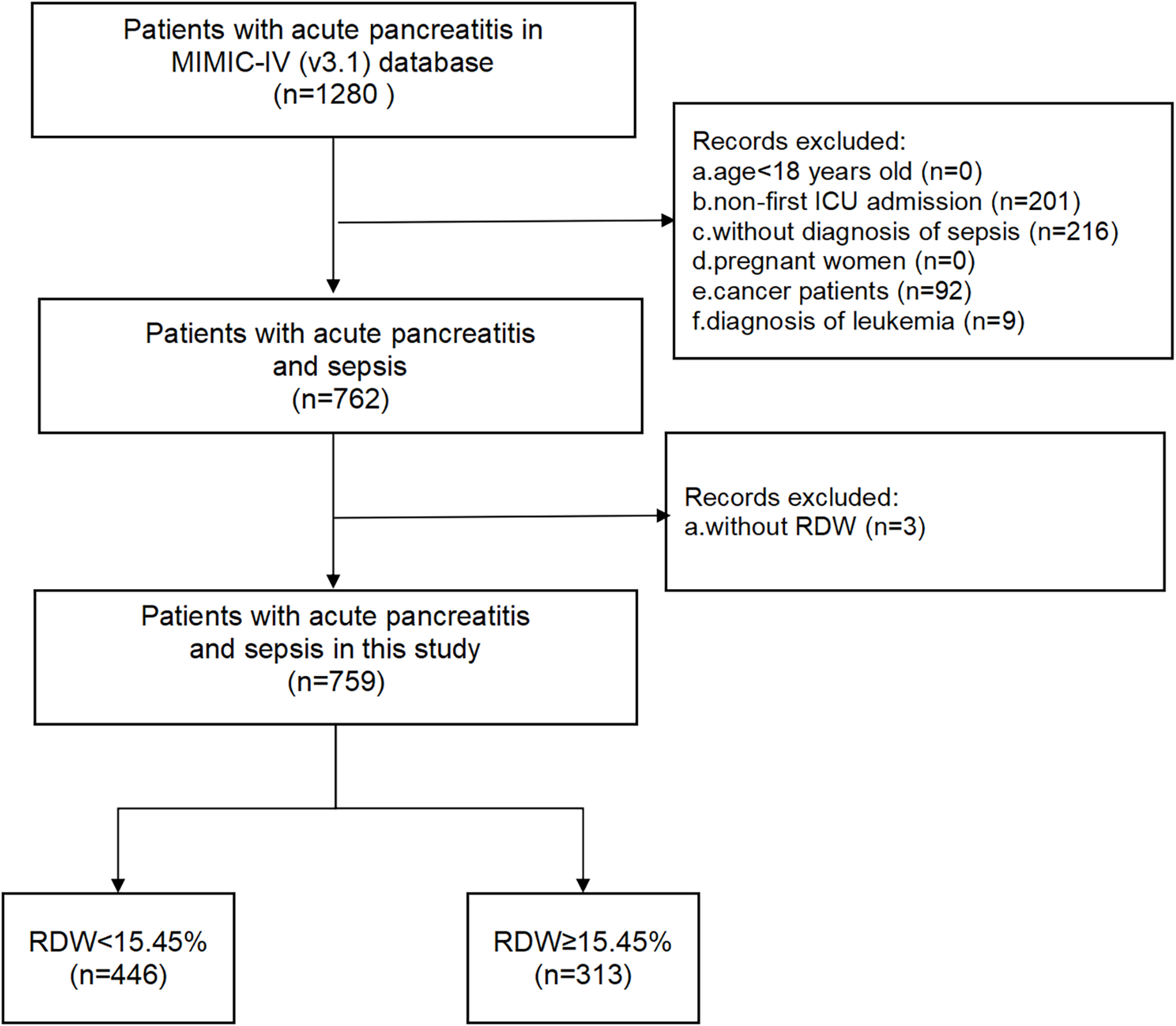In this study, we found that RDW is related to short- and long-term all-cause mortality in patients with AP and sepsis in the MIMIC-IV database. Cox regression analysis indicated that, even after adjusting for variables, RDW remained significantly related to the primary clinical outcomes, with the differences reaching statistical significance. In our sensitivity analysis restricted to patients without anemia, RDW remained significantly associated with 28-, 90-, and 365-day mortality in univariate Cox regression. However, this association lost statistical significance after adjustment for covariates in the multivariate model. This may be attributed to the reduced sample size in the non-anemic subgroup, which may have limited the statistical power to detect significant associations, particularly after adjustment for multiple covariates. However, further prospective studies with larger non-anemic populations are needed to validate these findings.
The RCS analysis in our study revealed specific turning points for RDW at 12.9%, 17.7%, and 17.7% for 28-, 90-, and 365-day mortality, respectively, suggesting a nonlinear association between RDW and mortality risk. Although we did not perform subgroup analyses based on these thresholds due to limited sample size, these values may hold important clinical significance. For instance, RDW levels exceeding 12.9% could serve as an early warning marker for clinicians to identify patients at increased risk of poor outcomes. Incorporating such thresholds into clinical protocols could potentially escalate care for high-risk patients. Moreover, these turning points may inform future risk stratification models and facilitate individualized prognostic assessments. Further prospective studies and multicenter cohorts are warranted to validate the prognostic utility and generalizability of these RDW thresholds. Establishing evidence-based cutoffs may ultimately support the integration of RDW into routine prognostic scoring systems for acute pancreatitis with sepsis.
Subgroup analyses revealed that both race and gender may modify the prognostic significance of RDW. The association between high RDW and long-term mortality was not significant in Black patients, in contrast to White and Other racial groups. This may reflect racial differences in baseline RDW distributions [25]. Additionally, the stronger association of RDW with short-term mortality in male patients raises the possibility of sex-based physiological or hormonal differences affecting erythropoiesis [26]. These findings suggest that RDW may be interpreted in the context of patient demographics.
In previous studies, RDW has been shown to be related to many diseases, such as ischemic stroke, carotid atherosclerosis, abdominal aortic aneurysm rupture, and cerebral embolism [12, 27]. Chen et al. [28] showed that in patients undergoing cardiac surgery, elevated RDW was associated with higher 28-day mortality. In addition, RDW is associated with a prognosis of cardiac arrest, heart failure, respiratory failure, and acute kidney injury [29,30,31,32]. Recent studies have also reported that RDW is associated with the prognosis of patients with COVID-19 and kidney failure [33, 34]. Moreover, RDW has been shown to serve as a prognostic marker in critically ill patients when used in combination with other clinical indicators [35].
In the study of He et al. [17], the AUC value of RDW for predicting in-hospital mortality of AP patients was lower than that of BISAP and SOFA. Our study demonstrated that the AUC for RDW was higher than that for SIRS and BISAP. RDW exhibited comparable or superior predictive performance relative to conventional scoring systems such as BISAP and SIRS, particularly in predicting long-term mortality. Although the AUC of RDW was lower than that of the SOFA score, this difference reached statistical significance only at 28 days and was not significant at 90 or 365 days. This suggests that RDW performs comparably to SOFA in predicting long-term mortality. However, these comparisons should be interpreted cautiously, as RDW is a single biomarker while these scores incorporate multiple clinical dimensions.
The possible mechanisms of occurrence in this study may be partly explained by the following three points. Firstly, AP is an acute inflammatory disease caused by auto-digestion of the pancreatic parenchyma; the pathogenesis involves activation of gastrointestinal enzymes, the kinin system, pancreas damage, and inflammation [36, 37]. In patients with sepsis, increased tissue kallikrein [38] may exacerbate endothelial hyperpermeability [38], which exacerbates the inflammatory response. Elevated levels of inflammatory cytokines and altered iron metabolism may lead to impaired erythropoiesis, leading to elevated RDW levels [39]. Secondly, one of the important pathogenesis of AP is pancreatic microcirculatory dysfunction [40]. When microcirculatory dysfunction is present, local hypoxia may be exacerbated, and the flow of RBC through the microvasculature may be impaired, leading to increased differences in red blood cell morphology, which may cause an elevated RDW [8, 41, 42]. Thirdly, chronic or persistent inflammation may lead to oxidative stress and nutrient imbalances, including increased utilization of intracellular iron and depletion of vitamin B12. These factors may suppress effective erythropoiesis and further contribute to variability in red blood cell morphology [9].
The advantage of this study is that RDW, as a single, easily accessible marker, can be used to predict clinical results in patients with AP and sepsis. Previously, BISAP, SIRS, and SOFA were key scores for assessing the prognosis of AP and sepsis, which have been demonstrated in several studies [21,22,23]. Our study showed that RDW retains strong predictive ability compared to BISAP and SIRS, and it performs similarly to SOFA in predicting long-term mortality. Many indicators have been used to predict the prognosis of AP in some recent literature. For example, serum lactate, triglyceride glucose- body mass index, and phosphorus-to-calcium ratio may be associated with the prognosis of AP [43,44,45]. Relying on a single index to determine the prognosis of a disease may be flawed. In the future, these indicators are expected to combine to determine the prognosis of a disease more comprehensively. This may provide clinicians with new insight to help them identify patients at risk for poor prognosis.
However, this study still has some limitations. First, this study is retrospective in nature. Although significant associations were observed, these findings should be interpreted as correlations rather than proof of causality. This limitation also impacts the clinical applicability of our results. RDW may serve as a useful prognostic indicator, but it should not yet be used in isolation to guide clinical decisions without prospective validation. Second, despite adjusting for a wide range of potential confounding variables in Model 3, residual confounding due to unmeasured variables remains a possibility. For instance, the MIMIC-IV database does not capture certain relevant factors such as inflammatory markers (e.g., procalcitonin, interleukins), nutritional status, or use of medications like protease inhibitors and somatostatin. In addition, some variables related to AP were excluded due to the excessive number of certain missing values in the database, including height, neutrophils, CRP, HbA1c, HDL, LDL, triglyceride, and TC. These factors can influence both RDW levels and patient prognosis. The absence of such data could potentially bias our results, either overestimating or underestimating the true relationship between RDW and mortality. Third, our study used only the first RDW measurement at ICU admission, which limits the ability to assess prognostic value from dynamic changes. Prior studies suggest that rising or persistently high RDW levels may indicate worse outcomes [46]. However, due to limited follow-up RDW data in MIMIC-IV, we could not analyze trends. Nevertheless, future prospective studies should incorporate serial RDW monitoring to evaluate temporal patterns and their prognostic value. Approaches such as modeling dynamic RDW values, slope-based change metrics, or incorporating time-dependent covariates in survival models may provide deeper insights into the dynamic prognostic utility of RDW in critically ill patients with AP and sepsis. Fourth, due to the limitations of the database itself, only patients enrolled in MIMI-IV were used in this study, and our study lacks external validation. To enhance the clinical applicability of our findings, future studies should perform external validation using independent cohorts from different countries, healthcare systems, or care levels (e.g., non-ICU settings, emergency departments, or general wards). In particular, patient populations such as those with acute pancreatitis without sepsis or sepsis alone could help evaluate the condition-specific utility of RDW. Approaches should include assessment of both calibration (agreement between predicted and observed outcomes) and discrimination (e.g., AUC) using the same cutoff values identified in our analysis. Fifth, our study exclusively focused on patients with AP and sepsis. We did not include patients with AP without sepsis, nor those with sepsis alone. This selection may have introduced a degree of selection bias and limits our ability to determine whether the prognostic value of RDW is specific to the co-occurrence of both conditions or also applicable when each occurs independently. Sixth, the study is subject to selection bias, as patients included in the MIMIC-IV database were not randomly selected but rather admitted based on clinical need and available data. This may have resulted in overrepresentation of patients with more severe conditions, which could affect the generalizability of our findings. Additionally, information bias may be introduced due to the reliance on clinical documentation and electronic health records, where misclassification or incomplete data may have occurred. Seventh, the retrospective application of Sepsis-3 criteria using electronic health record data presents inherent challenges. In retrospective datasets such as MIMIC-IV, infection is often inferred indirectly—via timing of antibiotics or culture orders—which may not fully reflect clinical judgment. Eighth, our study focused solely on all-cause mortality without distinguishing between specific causes of death. It may mask distinct associations between RDW and specific causes of death, such as infection-related, cardiovascular, or pancreatitis-associated mortality. Ninth, treatment heterogeneity among patients was not fully accounted for in our analysis. Certain treatments—such as blood transfusions, iron or vitamin supplementation, nutritional therapy, and organ support interventions (e.g., continuous renal replacement therapy, mechanical ventilation)—may alter RDW values or modulate inflammation and erythropoiesis, thereby indirectly influencing the relationship between RDW and clinical outcomes [16, 47,48,49,50]. Future prospective studies should aim to collect detailed treatment-related data and consider advanced statistical methods such as propensity score adjustment or stratified analysis to more accurately isolate the prognostic role of RDW from treatment effects. Tenth, our study may be subject to temporal bias due to the long data collection period (2008–2022) covered by the MIMIC-IV database. Over this time span, significant changes in the management of both acute pancreatitis and sepsis likely occurred, including updates in sepsis definitions (e.g., Sepsis-3 in 2016), improvements in early fluid resuscitation strategies, organ support protocols, and infection control practices. These clinical advancements could influence both mortality outcomes and the systemic inflammatory milieu, potentially affecting RDW values and their prognostic relevance. Moreover, technological improvements in hematologic analyzers over the years may have contributed to variability in RDW measurements. In this study, we did not perform stratified analyses by time periods due to sample size constraints and the lack of consistent treatment documentation. However, future studies should consider stratifying patients by admission year or implementing time-adjusted models to assess whether the predictive value of RDW is temporally stable or modified by evolving clinical practices. Furthermore, we conducted a post-hoc power analysis using G*Power to evaluate whether our total sample size (n = 759) was adequate for logistic regression analyses. Assuming OR = 1.2, α = 0.05, Pr = 0.17, and total sample size = 759, the analysis confirmed that our study had sufficient power to detect significant associations between RDW and mortality outcomes. However, when performing subgroup analyses, patients of Black race had relatively small sample sizes. Post-hoc analysis revealed that in this subgroup, the power of the test was below the 0.8 threshold, indicating a risk of type II error. Clinically, this implies that non-significant findings in these subgroups should not be interpreted as definitive evidence of no association between RDW and mortality. Rather, they reflect the need for cautious interpretation and underscore the importance of conducting future studies with larger and more diverse populations. Improving representation of underrepresented groups such as Black patients is essential to ensure that prognostic tools like RDW can be equitably applied across all patient populations.








